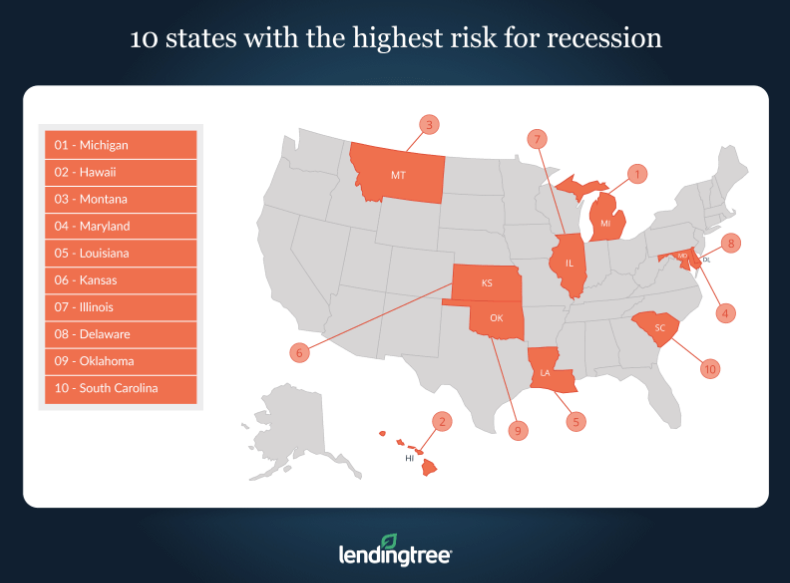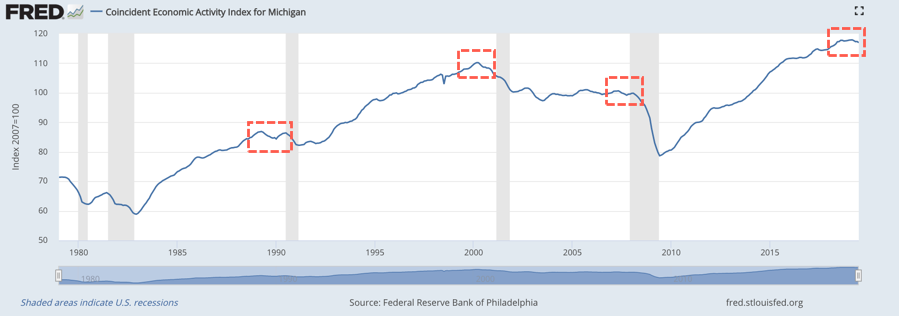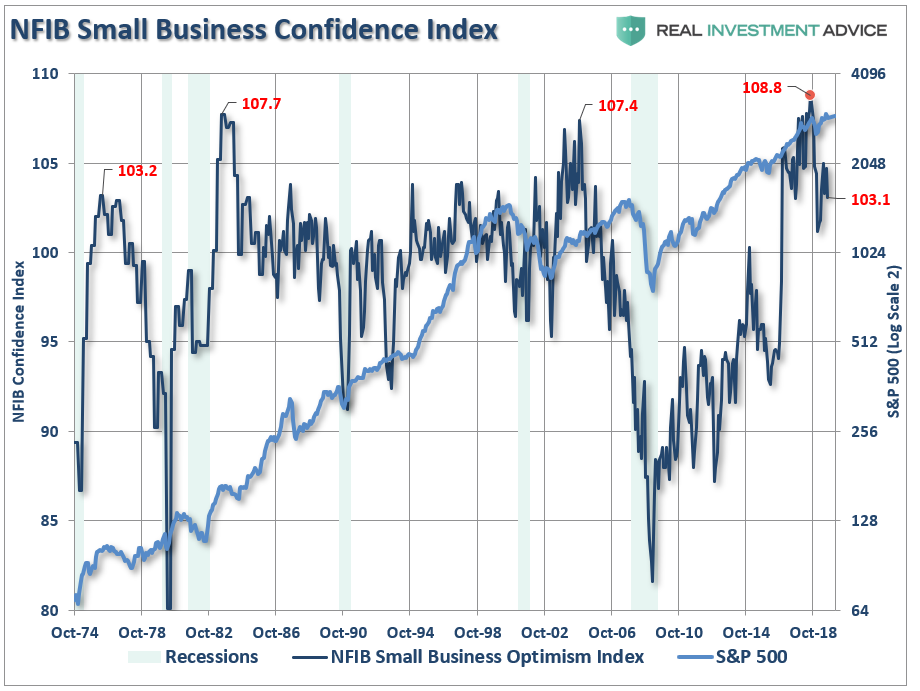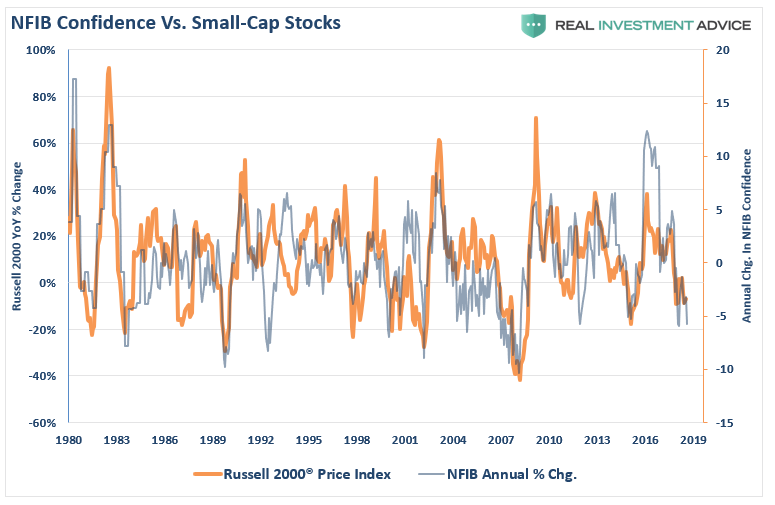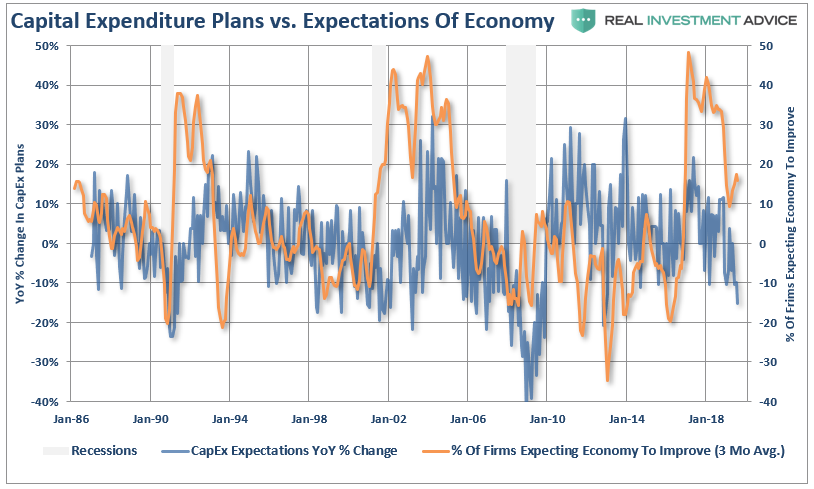Michigan Could Be In A Recession In Next Couple Months
According to a new LendingTree study, Michigan has the highest probability of entering an economic downturn later this year.
The study warned that Michigan, Hawaii, and Montana have the highest risks of a recession. The highest, however, is Michigan, with a 58.86% probability of a recession by 4Q19.
The state’s coincident index’s growth rate plunged into negative territory in July, confirming the local economy has already started to decline.
If the coincident index, created by the Federal Reserve Bank of Philadelphia to gauge economic development in a state’s economy, has YoY growth rates for two or more consecutive quarters, then LendingTree said a recession would be imminent.
Michigan is expected to be a big 2020 election battleground for President Trump. He unexpectedly won Michigan in the 2016 presidential election by telling voters he was going to make manufacture boom again.
However, President Trump faces tremendous headwinds with a rapidly slowing economy in Michigan ahead of the election year. Nevertheless, the country’s overall economy is faltering, now suffering from growth rate cycle downturns in industrials, inflation, and employment.
It’s not just Michigan, but the rest of the country has been battered by a manufacturing and transportation slowdown this summer. The slowdown started before the trade war but has been certainly amplified by the escalation of tariffs on Chinese imports, and even retaliatory tariffs on US exports to China, such as automobiles from Detroit.
Empire State factory index remains barely above zero in September
The numbers: The Empire State business conditions index fell 2.8 points to 2 in September, the New York Fed said Monday. Economists had expected little change and a reading of 4.9, according to a survey by Econoday.
Any reading above zero indicates improving conditions.
What happened: The details of the report were weak. The new orders index fell 3.2 points to 3.5 in September. The shipments index fell 3.5 points to 5.8, its lowest level in nearly three years. The unfilled-orders index remained negative for the fourth straight month. The employment index was one bright spot, rebounding out of negative territory.
Big picture: Weakness in manufacturing is one key reason the Federal Reserve is expected to cut its benchmark interest rate for the second straight meeting later this week. Trade tensions, global weakness and a strong dollar have combined to hit the factory sector hard. The Empire State Index is the first of several regional manufacturing readings that give economists a sense of national trends. The closely watched national ISM factory index slumped to 49.1 in August, a sign of contraction of activity and the lowest level since January 2016.
POLL: Economic approval takes hit in battleground states
President Trump’s economic approval numbers are declining in key battleground states and he trails a generic Democrat in the race for the White House, according to a poll conducted by Priorities USA, the nation’s largest Democratic super PAC.
The survey of Florida, Michigan, Nevada, Pennsylvania and Wisconsin finds a generic Democrat leading Trump 48 percent to 40 percent, with 11 percent undecided. Thirty-six percent said they would definitely vote for the Democrat, against only 26 percent who said they would definitely vote for Trump.
Trump won all of those states except for Nevada in 2016, with Michigan, Wisconsin and Pennsylvania going for the Republican candidate for the first time in decades.
The Priorities USA model projects 278 Electoral College votes for the Democrat, with 259 going to Trump and one undecided Electoral College vote in Nebraska’s 2nd District.
NFIB Survey Trips Economic Alarms
In August, the survey declined 1.6 points to 103.1. While that may not sound like much, it is where the deterioration occurred that is most important.
As I discussed previously, when the index hit its record high:
“Record levels of anything are records for a reason. It is where the point where previous limits were reached. Therefore, when a ‘record level’ is reached, it is NOT THE BEGINNING, but rather an indication of the MATURITY of a cycle.”
That point of “exuberance” was the peak.
It is also important to note that small business confidence is highly correlated to changes in, not surprisingly, small-capitalization stocks.
The stock market, and the NFIB report, confirm risk is rising. As noted by the NFIB:
“The Uncertainty Index rose four points in August, suggesting that small business owners are reluctant to make major spending commitments.”
Before we dig into the details, let me remind you this is a “sentiment” based survey. This is a crucial concept to understand.
“Planning” to do something is a far different factor than actually “doing” it.
For example, the survey stated that 28% of business owners are “planning” capital outlays in the next few months. That’s sounds very positive until you look at the trend which has been negative. In other words, “plans” can change very quickly.
